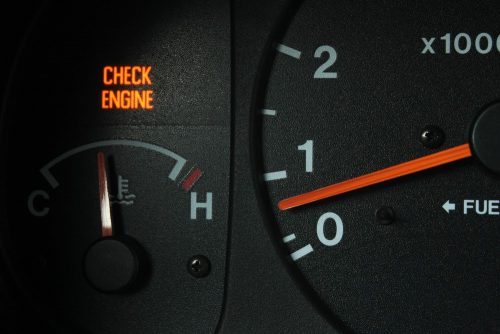
A car’s check engine light (CEL) is a confusing and frustrating warning. It might pinpoint to a minor issue–such as a loose gas cap or a failed sensor–or be a tell-tale sign of a bigger problem with the engine.
The light, whose formal name is malfunction indicator lamp, maybe yellow, orange, or amber in color. If you’re driving and it comes on, get your car checked out as soon as possible.
A blinking engine light is more serious because it may be a sign of an emergency. A steady light is nothing to worry about, but it’s better to get it assessed by a mechanic as soon as possible.
Understanding the Check Engine Light
It’s easy to confuse the “service required” light on the gauge cluster with the check engine light. But these two warning lights are totally unrelated. The “service required” light simply means that your car is due for an oil change or routine care. It does not indicate that there’s trouble–like the check engine light.
Mechanics don’t usually charge a lot to diagnose the problem, you can expect to pay about $75. However, you can also try to find out what the problem might be. If you’re a do-it-yourself enthusiast, you can purchase an inexpensive code reader online or from an auto parts store. The gadget connects to a car’s onboard diagnostics port and searches for the code’s meaning on relevant sites. Some modern code readers are simply apps in smartphones.
Turning Off the Check Engine Light
You can turn off the check engine light using a code reader. But turning the light off doesn’t mean you’ve fixed the problem. If you fail to get the issue fixed, the light will come back on later. The automotive computers in modern cars usually try to compensate for any problem, so your car may keep running perfectly. But your fuel mileage may suffer and your vehicle may produce very high levels of hydrocarbons and other pollutants.
Address Any Problems Immediately
Don’t cover the check engine light with black tape and keep driving. Address any problems promptly. If you ignore them, you may have to deal with complex, costlier problems. Here are three things you can do:
1. Tighten the Gas Cap
If you’re driving and the engine light comes on, check the gas cap first. Stop your car, pull over, and check if there are any cracks or if the plug is damaged. Tighten the gas cap well. When a gas cap is cracked or loose, there’s a leak in the vehicle’s vapor recovery system. A faulty or cracked gas cap allows fuel vapors to escape, increasing emissions.
2. Replace the Oxygen Sensor
Your car’s exhaust sensor monitors unburned oxygen in the exhaust system and measures how much fuel the car burns. Oxygen sensors are exposed to +800 degree exhaust temps and may fail after 80,000 miles. Replacing a sensor costs about $200 and you can do it on your own.
3. Change the Spark Plugs and Ignition Coils
An ignition coil provides the electricity spark plugs need to burn the fuel and start engine combustion. Failing spark plugs or worn coils can cause engine misfiring or make the car hesitation during acceleration. The vehicle may also shut off unexpectedly. You can change the two easily as they are accessible from your car’s hood.
Interesting Related Article: “Tips to Buy A Used Car Engine“

